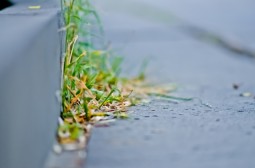 Having a new asphalt driveway put in outside of your home can require a lot of thought, planning, and money. The last thing you want is for this energy to have been wasted because your driveway looks old and worn quickly! With use cracks, scuffs, and sinkholes may occur. This not only looks bad, but can drag down the value of your home. But there are things you can do right after your new asphalt driveway has been put in, while you use it, and then after a problem has occured to help. Below are a few suggestions to consider.
Having a new asphalt driveway put in outside of your home can require a lot of thought, planning, and money. The last thing you want is for this energy to have been wasted because your driveway looks old and worn quickly! With use cracks, scuffs, and sinkholes may occur. This not only looks bad, but can drag down the value of your home. But there are things you can do right after your new asphalt driveway has been put in, while you use it, and then after a problem has occured to help. Below are a few suggestions to consider.
While New
As excited as you may be to test out your new addition, do not immediately start driving and parking on your new driveway. You should wait at least a good 3 days to let it harden, and even longer if the temperature outside is high. 5 should be enough. However, your the asphalt will not be fully cured and hardened for at least 6 months or up to 12 months.
Your asphalt driveway will never be perfectly hard like concrete, it will always be a little soft and pliable. This is why you need to be careful of a few things while using it over the years…
During Use
When it comes to taking care of your driveway while using it, there are a lot of DON’Ts. Do not park in the same spot everyday or use lawn chairs on the asphalte. Surprisingly the reason for both of these is the same. As mentioned before the pavement will stay soft and pliable so any amount of heavy pressure over time can cause dents and holes. Also, do not move the wheels of the car while parked, since the wiggling can cause problems as well.
Other unsightly annoyances such as scuff marks or crumbling asphalt can be avoided by not pulling in or not of the driveway too fast and avoiding the edges, which can not withstand as much pressure.
Liquids can help or hurt. When it is incredibly hot outside try using a hose to water down your driveway. The water will cool it down, hopefully helping to combat cracking. On the other hand be very weary of gasoline, oil, antifreeze, or transmission fluid leaking onto the pavement, since they can lead to holes and other problems.
Once it is Too Late
Some problems may seem disastrous and unfixable. It may look like an unsightly blemish can not be erased. But almost anything can be fixed when it comes to your asphalt driveway. First off, to prevent any further damage, you can have your driveway sealed. This stops water and other things from getting down into cracks and causing further problems from expansion or erosion. Do not have it sealed too often however, since this will cause your driveway to become too smooth, which can be slippery and dangerous.
Another simple option is to buy crack filler at almost any hardware shop.
If the structure of your driveway is still sound, consider having an overlay put on. It is exactly what it sounds like! A thin line of new asphalt is placed over the original pavement, giving you a new surface. You have probably seen this being done by crews working on highways.
Featured images:
- Image courtesy of Smart photo stock
This article was provided by Richmond Asphalt Paving. They are run by Gene George and have provided asphalt and concrete paving service in Central Virginia for years. Looking for asphalt or concrete paving work done? Check them out at http://www.richmondasphaltpaving.com.
